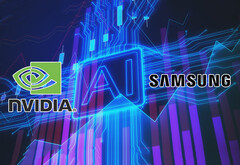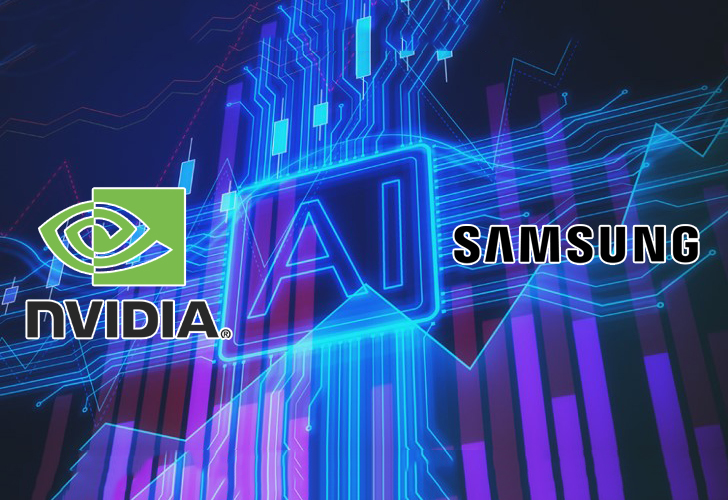
Nvidia might face AI GPU supply problems if it keeps relying only on TSMC. Team Green already suggested an Intel collaboration, but industry sources claim that Nvidia is also considering Samsung as a secondary source.
The ever-increasing demand for powerful AI accelerators has propelled Nvidia’s profits to new heights in the past year, yet the situation could get out of control if Team Green remains tied up to a single foundry. TSMC has its limits too, and with many other customers wanting a piece of the upcoming 3 nm wave, Nvidia is fully aware that its AI GPU production could see undesirable limitations. To diversify its production sources, Team Green has already started talks with other foundries. Back at Computex ‘23, Nvidia CEO Jensen Huang expressed his content with Intel’s next gen nodes, suggesting that future AI GPUs could be produced on the Intel 4 or even 20A nodes. A recent report also informs that Samsung could once again be selected as a chip producer for Nvidia’s advanced GPUs.
Samsung is no stranger to producing Nvidia’s GPUs. The South Korean giant previously fabricated all of Nvidia’s RTX 3000 gaming GPUs during the pandemic on the 8 nm nodes plus the GTX 1050/Ti mobile GPUs on the 14 nm nodes back in 2017. Currently, TSMC is fabricating all of Nvidia’s GPU stacks, including gaming, HPC and AI models. With the limited production capacities foreshadowed for TSMC’s upcoming 3 nm nodes, Nvidia is reportedly looking for other foundries, including Samsung. Industry sources close to the South Korean publication Chosun Biz claim that Nvidia is already in talks with Samsung, although the collaboration greatly depends on Samsung’s 3 nm nodes passing performance validation.
As of now, Samsung’s 3 nm nodes are still plagued with yield problems, so industry analysts cited by DigiTimes believe that Nvidia may not place large-scale orders too soon. This could drastically change in a few years, though, as Samsung is constantly investing in improvements for its 2.5D and 3D packaging technologies.
Nvidia’s high-end RTX 3000 / 4000 as well as the A100 and H100 data center GPUs are dominating the AI hardware market with a 90%+ share. However, AMD recently introduced ROCm support for its Radeon 7000 gaming cards, allowing for most generative AI applications using Nvidia Tensor cores to work on Team Red’s hardware, while Intel may also chip in with the upcoming Xe2-HPG GPUs.
Related Articles

Bogdan Solca – Senior Tech Writer – 2070 articles published on Notebookcheck since 2017
I first stepped into the wondrous IT&C world when I was around seven years old. I was instantly fascinated by computerized graphics, whether they were from games or 3D applications like 3D Max. I’m also an avid reader of science fiction, an astrophysics aficionado, and a crypto geek. I started writing PC-related articles for Softpedia and a few blogs back in 2006. I joined the Notebookcheck team in the summer of 2017 and am currently a senior tech writer mostly covering processor, GPU, and laptop news.
Bogdan Solca, 2023-07- 5 (Update: 2023-07- 5)







